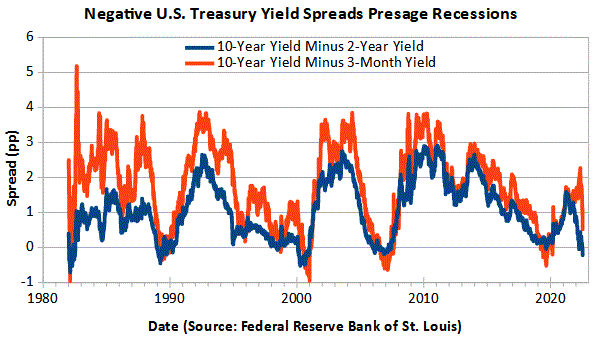|
|||||
|
|||||
|
Watching for a bottom The economy is starting to fall. Its descent is promising to be like that of the space capsule in the movie Apollo 13. As it plunges, everyone is waiting with bated breath, hoping to see the parachutes deploy before it crashes. The economy got knocked out of orbit as the central banks boosted their benchmark rates in an attempt to bring inflation under control. The Bank of Canada continued its string of rate increases with a full percentage point boost to its policy rate last Wednesday bringing it up to 2.5 per cent. They also indicated that even higher rates are to come. Ominously, the bank's policy rate is still well below the inflation rate, which was last seen soaring to 7.7 per cent. The Bank of Canada now expects inflation to fall from roughly 8 per cent in the third quarter of 2022 to about 3 per cent by the end of 2023. Mind you, the forecast's release coincided with new inflation figures from the U.S. that were less than promising because inflation there shot up to 9.1 per cent. Problem is, the bond market isn't giving the central banks much room to manoeuvre. Ten-year government bond yields seem to be stuck near 3 per cent as short-term rates jump higher. As a result, the spread between long-term and short-term rates is flattening. The yield on 10-year Canadian government bonds exceeds that on three-month bonds by 0.6 of a percentage point after the Bank of Canada announced its rate hike. At the same time, the spread between 10-year and two-year government bond yields turned negative, at minus 0.2 of a percentage point. Both signal an increased likelihood of a recession over the next year or so. The situation is similar in the U.S. where the Federal Reserve is likely to continue to boost its benchmark rate when it meets later this month, which should further squeeze yield spreads. For instance, the 10-year to three-month spread in the U.S. stands at about 0.6 of a percentage point. The gap could be nearly closed with a half-percentage-point increase in the Federal Reserve's benchmark rate. The spread might go negative should the Fed follow in the Bank of Canada's footsteps by boosting rates by one percentage point. You can examine the history of U.S. spreads in the accompanying graph.  The spread between 10-year and three-month government bond yields is more variable than that between 10-year and two-year bond yields. Both tend to shrink when the Federal Reserve is tightening and they usually fall below zero just before the onset of recessions. For instance, the National Bureau of Economic Research figures that U.S. recessions started in mid-1981, mid-1990, early 2001, late 2007 and early 2020. All of which occurred shortly after the notable dips on the graph when spreads bottomed out. Think back to those recessions as examples of hard landings. The pandemic-fuelled downturn of 2020 was the shortest of the bunch, but it saw unusual levels of government support - and interference - in the economy that are unlikely to be repeated any time soon. The other recessions were bad for more regular reasons of the sort that are likely to apply this time around. The stock markets are anticipatory and, as they often do, have already reacted negatively to fears the economy will crater. Investors are left to wonder how bad the downturn will get or if the worst is already behind us. Either way, the stock market should turn before the economy starts to recover. Investors would be wise to look for the deployment of economic parachutes before loading up on stocks. That might mean waiting for the central banks to reverse course by lowering rates and resuming quantitative easing. Alternately, the appearance of significant distress in the corporate bond market has presaged bottoms and good buying opportunities in the past. Until then, buckle up because the world is facing all sorts of calamities and inflation is one among many. While you're strapping in, don't take too much comfort in the talk of soft landings because they are few and far between in practice. Instead, when the economy plunges from orbit after central bank tightening, it usually crashes into a recession. First published in the Globe and Mail, July 17 2022. |
|||||
| |||||
| Disclaimers: Consult with a qualified investment adviser before trading. Past performance is a poor indicator of future performance. The information on this site, and in its related newsletters, is not intended to be, nor does it constitute, financial advice or recommendations. The information on this site is in no way guaranteed for completeness, accuracy or in any other way. More... | |||||